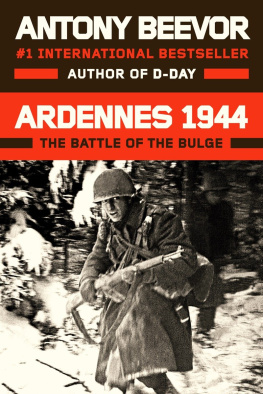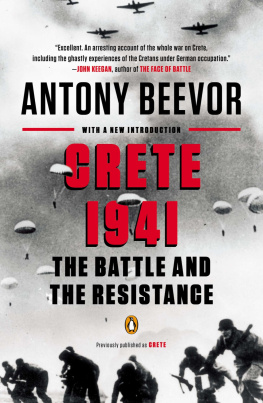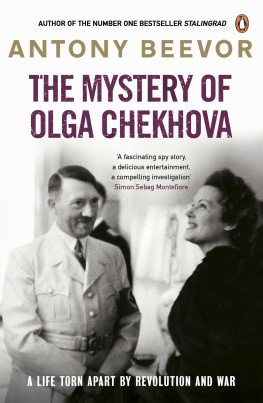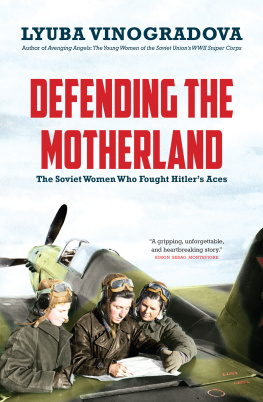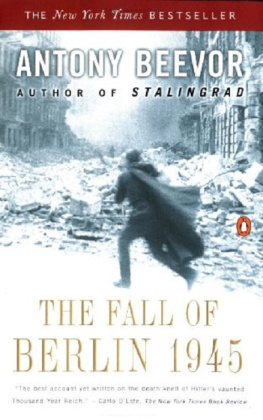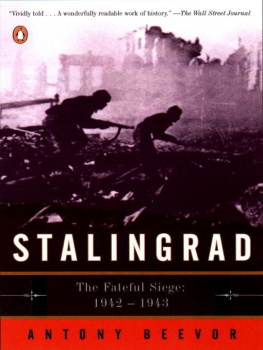In accordance with the U.S. Copyright Act of 1976, the scanning, uploading, and electronic sharing of any part of this book without the permission of the publisher constitute unlawful piracy and theft of the authors intellectual property. If you would like to use material from the book (other than for review purposes), prior written permission must be obtained by contacting the publisher at permissions@hbgusa.com. Thank you for your support of the authors rights.
To Michael Howard
ILLUSTRATIONS
SECTION ONE
The Rape of Nanking December 1937. Japanese troops at bayonet practice on Chinese prisoners in the killing pits. (Keystone / Getty)
Japanese horse artillery advancing in southern China. (Corbis)
Joseph Goebbels and Hermann Gring. (Der Spiegel)
Warsaw August 1939, citizens reading about Hitlers threats. (Getty)
The bombing of Narvik, Norway, April 1940. (Getty)
The crew of a French B1 tank surrender to German troops, May 1940. (Getty)
Dunkirk evacuation. French survivors from the sinking destroyer Bourrasque, 30 May 1940. (Hulton / Getty)
Battle of Britain: German aircrew taken prisoner by the Home Guard, 12 September 1940. (Getty)
Hans Frank, the regent of the Generalgouvernement, summons Polish clergy. (Bundesarchiv)
Victorious German paratroopers in Heraklion on Crete, 1 June 1941. (W.John)
Operation Exporter: the crew of a British Bren gun carrier in Syria, June 1941. (Time & Life Pictures / Getty)
Operation Barbarossa: a Ukrainian village ablaze in July 1941. (Russian State Documentary Film and Photo Archive)
Red Army infantry storming a village in the great Moscow counter-attack of December 1941. (RIA Novosti)
SECTION TWO
The USS Shaw explodes during the Japanese attack on Pearl Harbor, 7 December 1941. (Getty)
Hitler declares war on the United States to the Reichstag in the Kroll Opera House, 11 December 1941. (Bundesarchiv)
The Soviet counter-offensive near Moscow, December 1941. (Russian State Documentary Film and Photo Archive)
German supply services reduced to horse-drawn peasant carts, December 1941. (TopFoto)
A medical orderly bandages a wounded Soviet soldier. (Russian State Documentary Film and Photo Archive)
The effects of starvation: three identity photos of Nina Petrova in Leningrad, May 1941, May 1942, October 1942. (History Museum of St Petersburg)
Evacuees from Leningrad on the Ice Road across Lake Ladoga, April 1942. (Rafael Mazalev)
Rommel in North Africa: the picture taken by Hitlers personal photographer, Heinrich Hoffmann and Eva Brauns employer. (Getty)
The Japanese advance in Burma, with soldiers acting as bridge supports. (Ullstein / TopFoto)
Japanese troops celebrate victory on Corregidor at the mouth of Manila Bay, 6 May 1942. (Getty)
German officers relax in a caf on the Champs-Elyses, Paris. (Corbis)
Hamburg after the firestorm raids of late July 1943. (Getty)
US Marines storm Tarawa atoll in the Gilbert Islands, 19 November 1943. (Getty)
Prisoner in a German concentration camp tied to the wire for execution. (Bildarchiv)
HMS Belfast on an Arctic convoy, November 1943. (Imperial War Museum)
Soviet war industry mobilization. (Russian State Documentary Film and Photo Archive)
Japanese cavalry detachment in China. (Ullstein / TopFoto)
German infantry in Stalingrad. (Art Archive)
SECTION THREE
Generalissimo and Madame Chiang Kai-shek smile for the cameras with General Stilwell. (George Rodger / Magnum Photos)
MacArthur, Roosevelt and Nimitz at Pearl Harbor, 26 July 1944 (US National Archives and Record Administration)
US troops land on Bougainville, Solomon Islands, 6 April 1944. (Time & Life / Getty)
A Hellcat crash-landed on a carrier. (Getty)
German prisoner in Paris, 26 August 1944. (Bibliothque historique de la Ville de Paris)
Stretcher-bearers in the Warsaw Uprising, September 1944. (Warsaw Uprising Museum)
Medical services during the bombing of Berlin. (Bundesarchiv)
Churchill in Athens. (Dmitri Kessel)
British troops occupy Athens, December 1944. (Dmitri Kessel)
Red Beach on Iwo Jima, February 1945. (Getty)
Filipina women rescued during the battle for Intramuros in Manila. (Time & Life / Getty)
SECTION FOUR
Soviet infantry on a SU-76 self-propelled gun in a burning German town. (Planeta, Moscow)
Civilians wait to enter a flak tower bunker in Berlin. (Bildarchiv)
To Berlin, Soviet traffic controller. (Russian State Documentary Film and Photo Archive)
Civilians clearing rubble in Dresden after the bombing, February 1945. (Bildarchiv)
C-46 transport plane landing at Kunming (William Vandivert for Life / Getty)
Japanese kamikaze pilots pose for a memorial picture. (Keystone / Getty)
Marble Gallery in the battered Reichschancellery. (Museum Berlin-Karlshorst)
German wounded in Berlin, 2 May 1945. (Museum Berlin-Karlshorst)
The Japanese surrender on the USS Missouri, 2 September, 1945. (Corbis)
Homeless civilians on Okinawa. (US National Archives and Record Administration)
MAPS
ENDPAPERS
Europe, the Mediterranean and the western Soviet Union (August 1942)
The Pacific (August 1942)

The Korean Yang Kyoungjong who had been forcibly conscripted in turn by the Imperial Japanese Army, the Red Army and the Wehrmacht, is taken prisoner by the Americans in Normandy in June 1944.
I n June 1944, a young soldier surrendered to American paratroopers in the Allied invasion of Normandy. At first his captors thought that he was Japanese, but he was in fact Korean. His name was Yang Kyoungjong.
In 1938, at the age of eighteen, Yang had been forcibly conscripted by the Japanese into their Kwantung Army in Manchuria. A year later, he was captured by the Red Army after the Battle of Khalkhin Gol and sent to a labour camp. The Soviet military authorities, at a moment of crisis in 1942, drafted him along with thousands of other prisoners into their forces. Then, early in 1943 he was taken prisoner by the German army at the Battle of Kharkov in Ukraine. In 1944, now in German uniform, he was sent to France to serve with an Ostbataillon supposedly boosting the strength of the Atlantic Wall at the base of the Cotentin Peninsula inland from Utah Beach. After time in a prison camp in Britain, he went to the United States where he said nothing of his past. He settled there and finally died in Illinois in 1992.
In a war which killed over sixty million people and had stretched around the globe, this reluctant veteran of the Japanese, Soviet and German armies had been comparatively fortunate. Yet Yang remains perhaps the most striking illustration of the helplessness of most ordinary mortals in the face of what appeared to be overwhelming historical forces.
Europe did not stumble into war on 1 September 1939. Some historians talk of a until 1945, or even lasted until the fall of Communism in 1989.
History, however, is never tidy. Sir Michael Howard argues persuasively that Hitlers onslaught in the west against France and Britain in 1940 was in many ways an extension of the First World War. Gerhard Weinberg also insists that the war which began with the invasion of Poland in 1939 was the start of Hitlers drive for Lebensraum (living space) in the east, his key objective. This is indeed true, yet the revolutions and civil wars between 1917 and 1939 are bound to complicate the pattern. For example, the left has always believed passionately that the Spanish Civil War marked the beginning of the Second World War, while the right claims that it represented the opening round of a Third World War between Communism and western civilization. At the same time, western historians have usually overlooked the Sino-Japanese War from 1937 to 1945, and the way that it merged into the world war. Some Asian historians, on the other hand, argue that the Second World War began in 1931 with the Japanese invasion of Manchuria.
Next page


